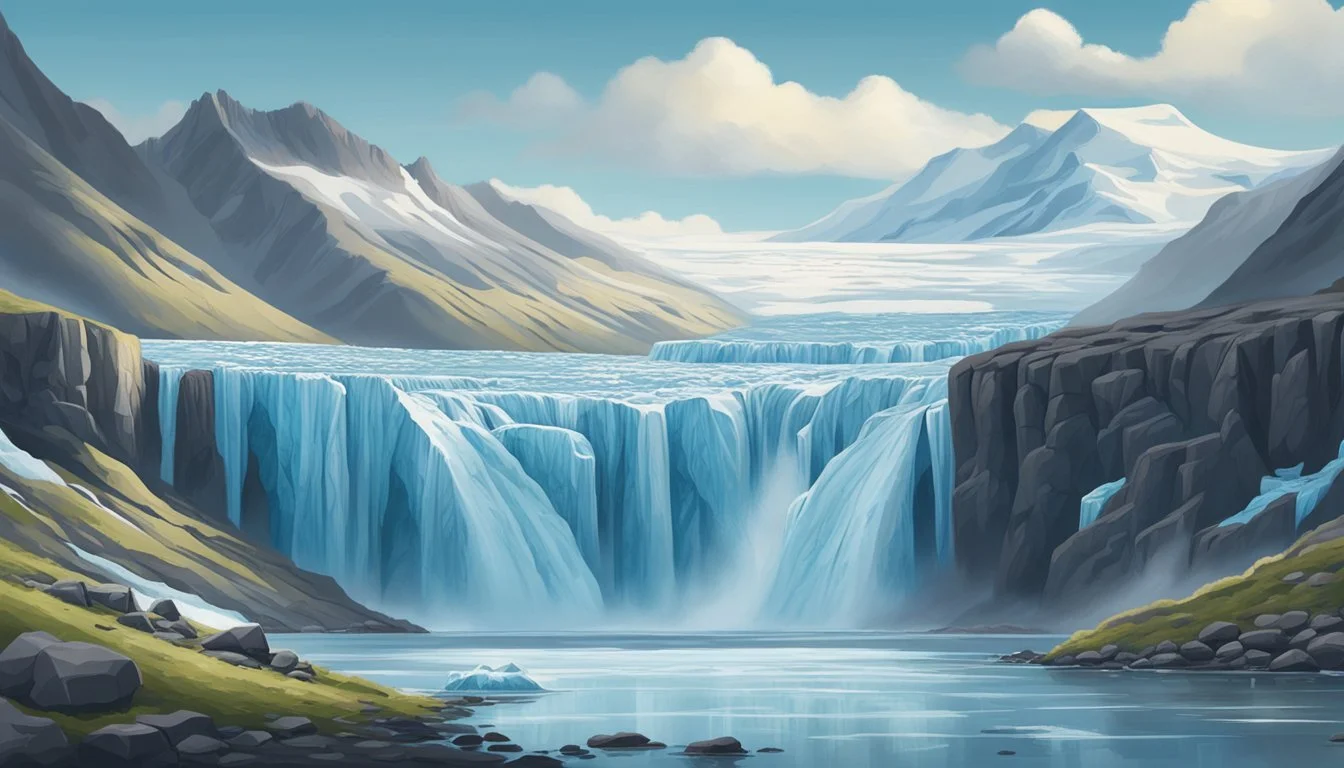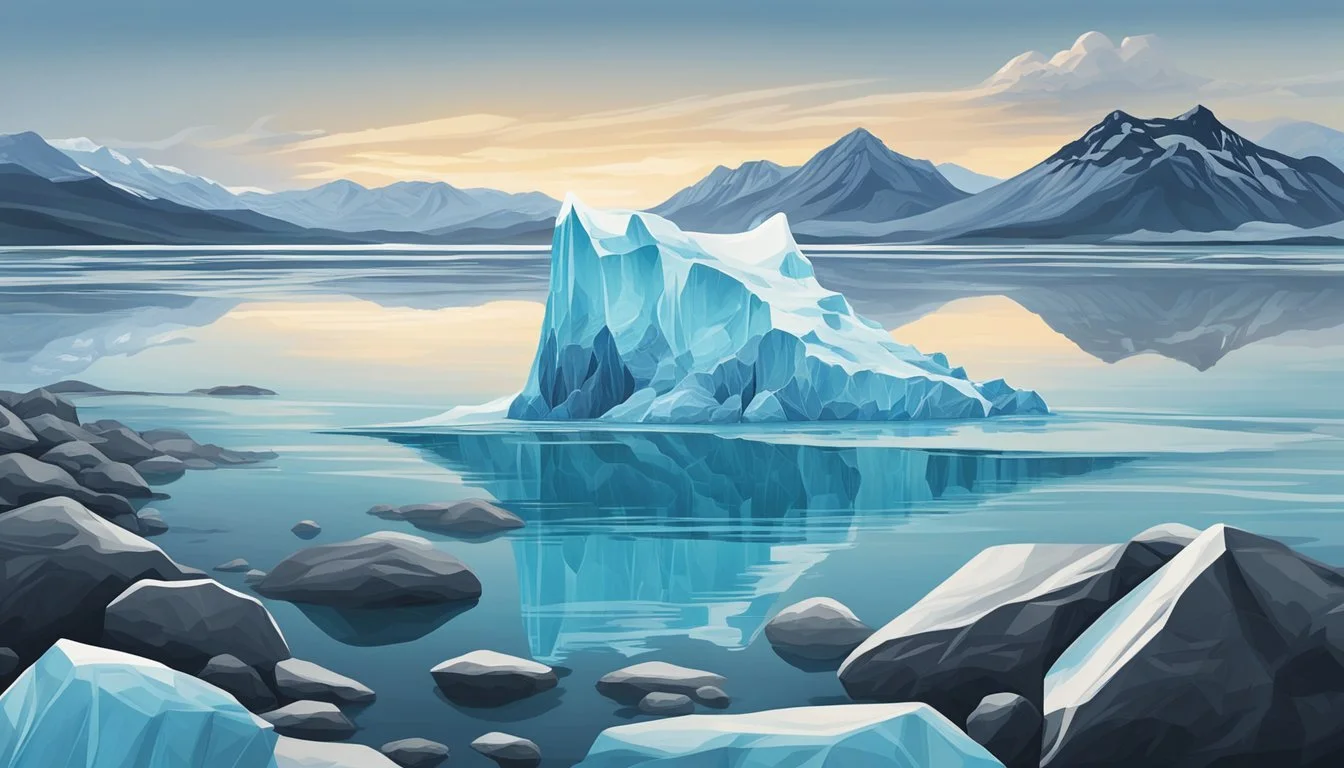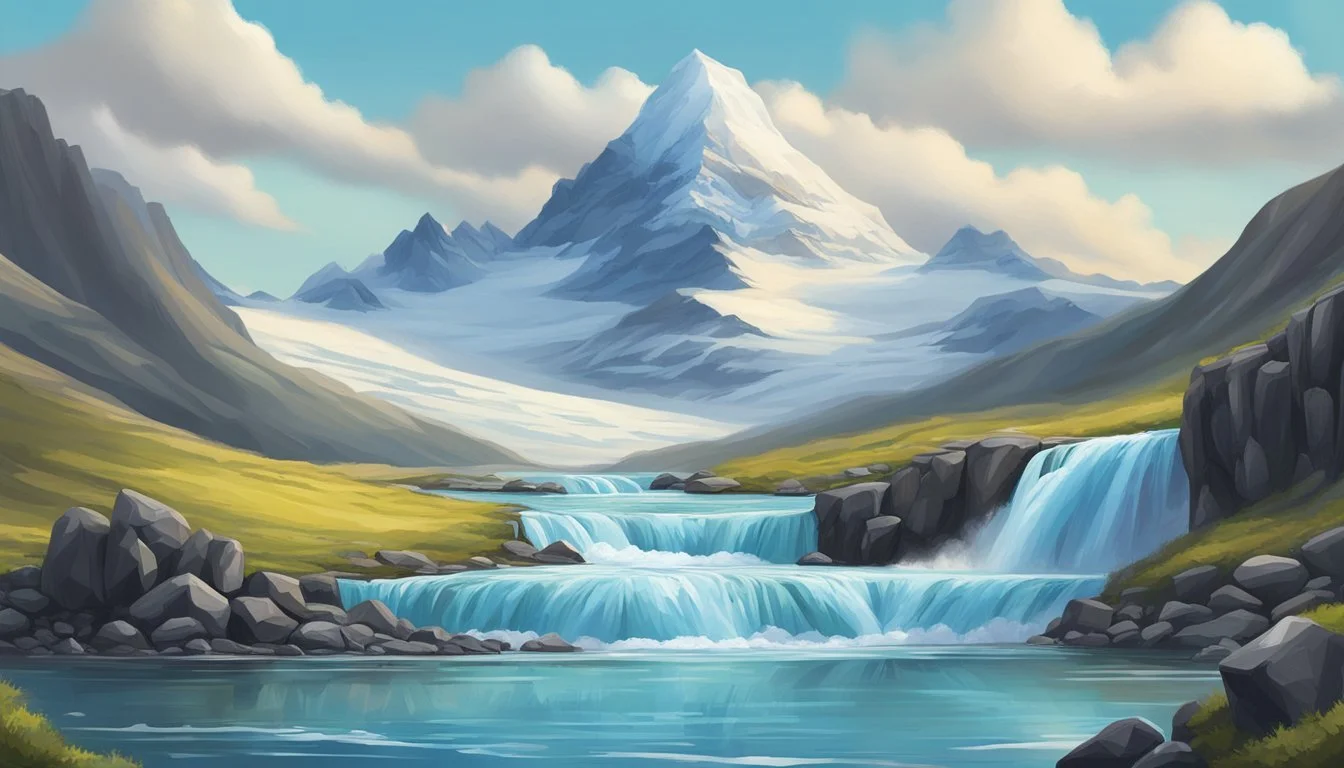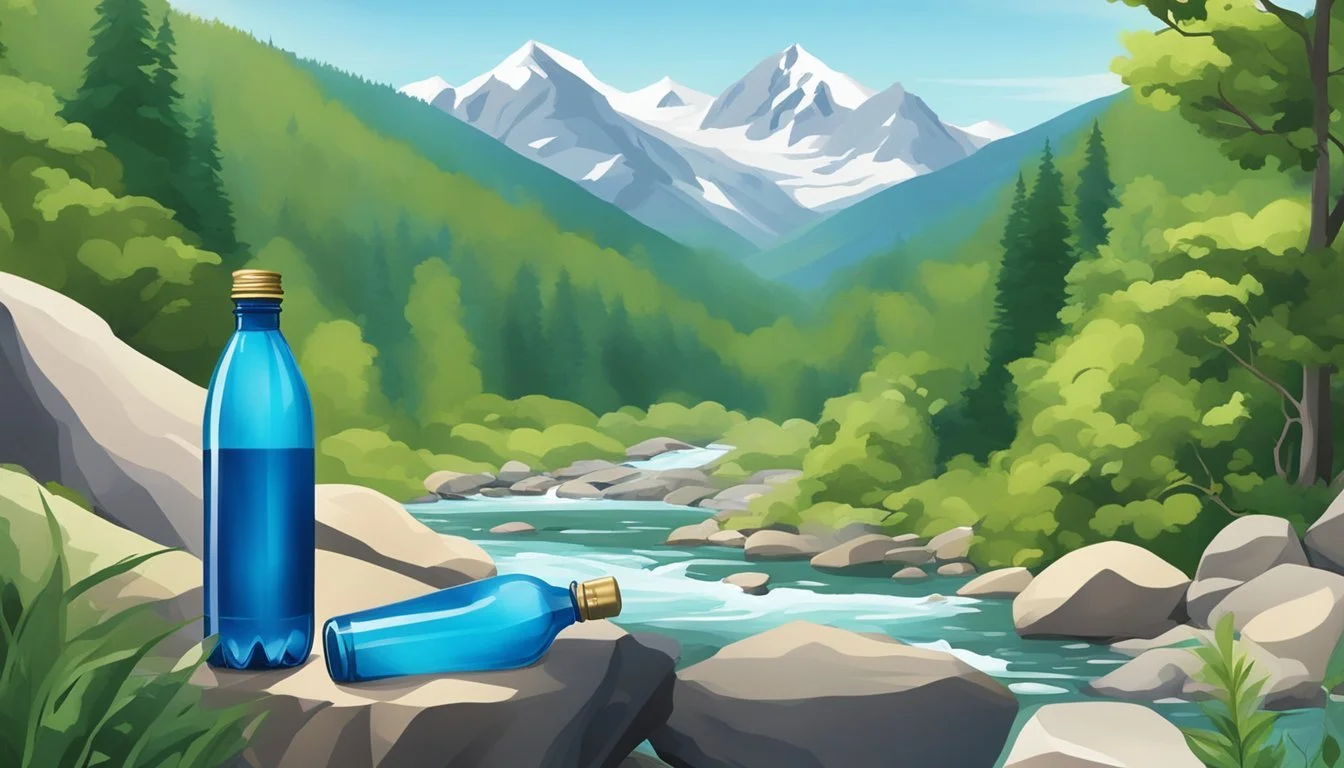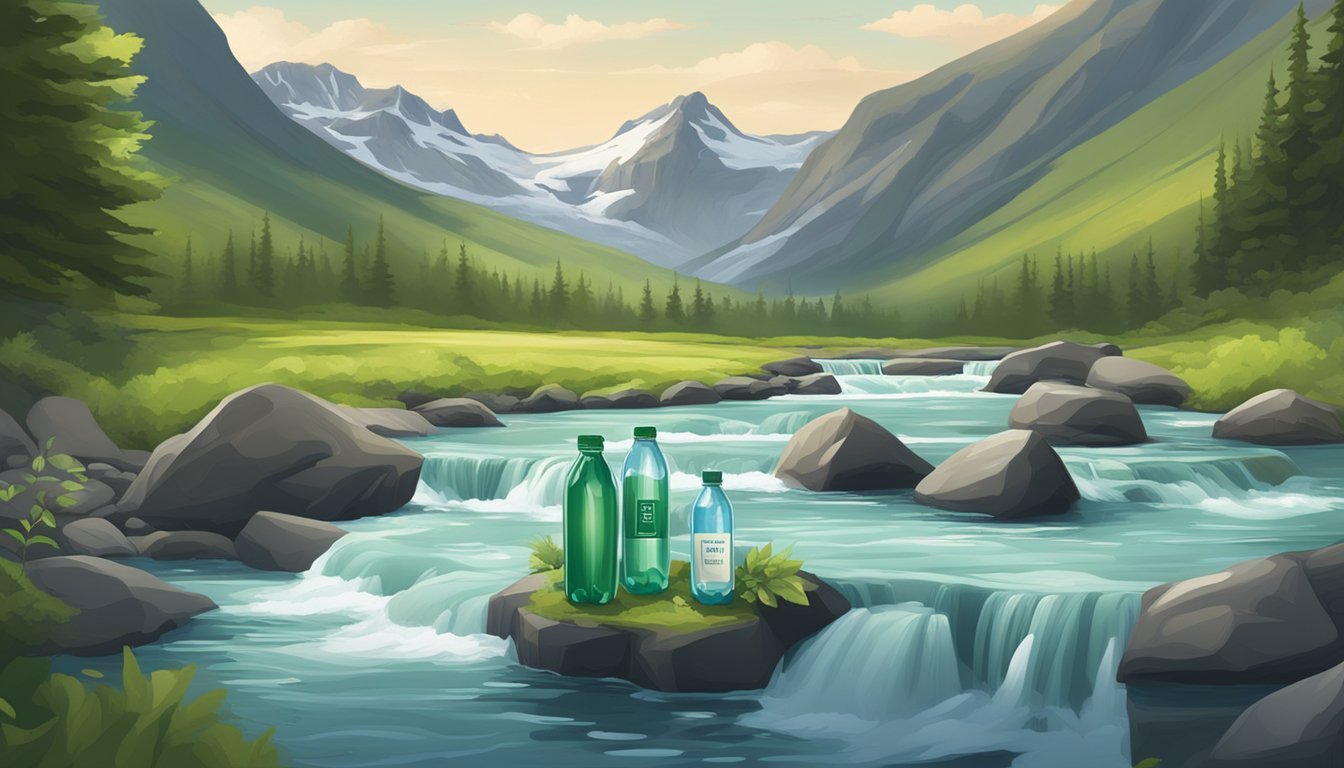Icelandic Glacial vs. Cascade Mountain
A Comparative Analysis of Bottled Water Quality
Choosing the right bottled water can be as intricate as picking a fine wine. This blog post compares two contenders: Icelandic Glacial and Cascade Mountain. Both brands claim to offer superior hydration and purity, but what sets them apart?
Icelandic Glacial stands out for its pristine source and balanced mineral content. Sourced from the Ölfus Spring in Iceland, it's often praised for its refreshing taste and purity. Despite its accolades, availability can be an issue.
Cascade Mountain targets budget-conscious consumers while still providing quality hydration. This brand bottles water from mountain springs in the western U.S. and Canada, making it more accessible. Yet, some find it lacks the premium aspect of its Icelandic rival.
Understanding Bottled Water
When considering bottled water, it's important to look at how it is defined, the factors that determine its quality and purity, and the regulations that govern its production.
Defining Bottled Water
Bottled water is water that is sealed in bottles or other containers and intended for human consumption. It can come from various sources including springs, wells, and municipal supplies.
Different types include spring water,mineral water, artesian water, and purified water. Each type has specific characteristics:
Spring Water: Comes from an underground formation and flows naturally to the surface.
Mineral Water: Contains no less than 250 parts per million total dissolved solids (TDS).
Purified Water: Has been processed by distillation, deionization, or reverse osmosis.
Evaluating Quality and Purity
The quality and purity of bottled water are essential considerations for consumers. Factors include:
Source of Water: Whether it's natural springs or municipal sources.
pH Factor: Ideal bottled water generally has a neutral pH around 7.0, but variations can occur.
Total Dissolved Solids (TDS): Measures the combined content of all inorganic and organic substances.
Brands often provide detailed quality reports that list the mineral content and other attributes. Consumers should check these reports for information on electrolytes like calcium, magnesium, and potassium that contribute to hydration efficiency.
Regulations and Standards
Bottled water is regulated by the Food and Drug Administration (FDA), which sets standards for safety and labeling.
Regulations cover:
Source Protection: Ensuring water sources are protected from contaminants.
Bottling Plants: Must follow sanitary practices to avoid contamination.
Labeling: Must accurately depict the source and type of water.
These standards aim to ensure that bottled water is safe to drink and free from harmful levels of contaminants. Regular inspections and compliance audits are conducted at bottling facilities to maintain these standards.
Icelandic Glacial Overview
Icelandic Glacial is renowned for its pure and naturally alkaline water, sourced from one of the largest natural springs in the world. Its commitment to sustainability and innovative practices make it a standout in the bottled water industry.
Origin and Source
Icelandic Glacial sources its water from the Ölfus Spring in Iceland. This massive spring is continuously replenished by rainfall and snowmelt, filtering through layers of volcanic rock.
The natural filtration through lava rock gives the water its high pH level of 8.4, making it naturally alkaline. The spring's capacity ensures that Icelandic Glacial can sustain its production without depleting the natural resource. The operation uses renewable energy, including hydroelectric power, emphasizing its minimal environmental impact.
Brand Philosophy and Recognition
Icelandic Glacial is dedicated to sustainability and reducing its carbon footprint. It was the first bottled water company to be certified CarbonNeutral, which reflects its commitment to environmentally friendly practices.
The company prioritizes using 100% recyclable materials for its packaging. It has received accolades such as the Bottled Water World Design Awards, highlighting its dedication to both aesthetics and sustainability.
The brand's initiatives align with global efforts to promote renewable energy and reduce waste, gaining recognition and trust from consumers worldwide.
Cascade Mountain Profile
Cascade Mountain bottled water is known for its pristine source and commitment to sustainability. This profile delves into its origin and natural filtration, as well as the company's environmental efforts.
Origin and Natural Filtration
Cascade Mountain water originates from a protected natural spring nestled in the Cascade Range. This spring is renowned for its purity, fed by rain and snowmelt filtered through volcanic rock.
The natural filtration process ensures that the water is free from contaminants. It also enriches the water with essential minerals, giving it a crisp, clean taste. The source's volcanic history contributes to the mineral content, distinguishing it from other bottled waters.
Environmental Commitments
Cascade Mountain is dedicated to minimizing its environmental impact. The company employs eco-friendly practices throughout its production process.
Its bottling facilities use renewable energy and eco-efficient technology. Additionally, Cascade Mountain highlights its efforts in carbon neutrality, ensuring that their operations offset as much CO2 as they emit.
The brand also focuses on using recyclable materials for its bottles. They promote initiatives to reduce plastic waste and encourage recycling among consumers. These commitments underline Cascade Mountain's role as a responsible player in the bottled water industry.
Health and Hydration
When comparing Icelandic Glacial and Cascade Mountain bottled waters, factors such as hydration efficiency and mineral content are critical. Understanding their impact on wellness and health benefits will help determine the better option.
Hydration and Wellness
Hydration is vital for maintaining various bodily functions. Both Icelandic Glacial and Cascade Mountain waters provide essential hydration. Icelandic Glacial water, sourced from Iceland, offers exceptional purity and a balanced pH level, making it effective for quick rehydration. Cascade Mountain water, sourced from the Pacific Northwest, also supports efficient hydration through its clean and refreshing taste.
Drinking water with optimal electrolytes can enhance hydration. Electrolytes such as sodium, potassium, calcium, and magnesium are crucial in regulating body functions and maintaining fluid balance. Both brands strive to offer a balanced mix of these electrolytes.
Mineral Content and Benefits
Calcium and magnesium are prominent in both Icelandic Glacial and Cascade Mountain waters. These minerals support bone health and metabolic functions.
Icelandic Glacial water is known for its high mineral content, naturally filtered through ancient lava rocks. The natural filtration process enriches the water with essential minerals.
Cascade Mountain water also boasts significant mineral content, adding to its benefits. Key electrolytes present in both waters, like potassium and bicarbonate, are vital for proper muscle function and maintaining a stable pH level in the body.
By comparing these aspects, consumers can choose which bottled water aligns better with their dietary needs and hydration goals.
Examining Taste and Palate
Taste is a critical factor when comparing bottled waters like Icelandic Glacial and Cascade Mountain. Attention to components like mouthfeel and hardness can reveal much about their unique qualities.
Components of Taste
Evaluating the taste of water involves several key elements: mineral content, pH levels, and purity. Mineral content directly affects the flavor profile, with higher concentrations resulting in a more pronounced taste. For instance, Icelandic Glacial is known for its pristine purity and balanced mineral composition, providing a clean, crisp taste.
Mouthfeel is another significant factor. Waters with higher hardness levels, caused by minerals like calcium and magnesium, tend to have a smoother, more substantial feel on the palate. Icelandic Glacial, sourced from an Icelandic spring, typically offers a soft mouthfeel due to its natural volcanic filtration. In contrast, Cascade Mountain, sourced from the Pacific Northwest, might present a different texture based on its own mineral makeup.
Role of a Water Sommelier
A water sommelier specializes in distinguishing the subtle differences between various types of bottled water. Their expertise is essential in tasting sessions to assess nuances in flavor, mouthfeel, and mineral content. They use descriptors similar to those found in wine tasting, providing insights into the carbonation levels or any distinct mineral flavors.
In tasting Icelandic Glacial, sommeliers often note its clean and neutral taste, highlighting the absence of contaminants and balanced mineral levels. For Cascade Mountain, they might remark on any earthy notes or distinct mineral flavors that characterize its regional source. Their role ensures a comprehensive understanding of each brand's unique taste profile.
Packaging and Sustainability
Both Icelandic Glacial and Cascade Mountain emphasize eco-friendly packaging and sustainability practices. The materials used and their recyclability are crucial factors that impact both consumer convenience and environmental responsibility.
Bottle Material and Design
Icelandic Glacial uses PET bottles that are BPA-free and fully recyclable. PET, short for polyethylene terephthalate, is chosen for its durability and lower environmental footprint compared to other plastics. These bottles also aim to maintain the fresh taste of the water without imparting any plastic flavor.
Cascade Mountain also uses PET bottles, similarly designed to be BPA-free and recyclable. The design considers both aesthetic appeal and functionality, ensuring the bottle is easy to carry and use. Like Icelandic Glacial, Cascade Mountain’s packaging is designed to keep the water tasting pure and fresh.
Environmental and Recycling Practices
Icelandic Glacial is committed to reducing its carbon footprint. The company uses 100% natural green energy for its bottling process and participates in global reforestation projects to offset carbon emissions. Their PET bottles are designed to be easily recyclable, promoting a closed-loop recycling system that reduces waste.
Cascade Mountain also takes significant steps towards sustainability. The company invests in renewable energy sources for production and employs efficient recycling practices. They encourage consumers to recycle their PET bottles, contributing to a reduction in plastic waste and fostering environmental conservation.
In summary, both brands make strong efforts in eco-friendly packaging and sustainability, with Icelandic Glacial focusing on carbon offsetting and Cascade Mountain embracing renewable energy.
Comparative Analysis of Icelandic Glacial and Cascade Mountain
This section examines Icelandic Glacial and Cascade Mountain through detailed comparisons of specific attributes important to consumers, such as mineral content, taste, environmental impact, and price.
Mineral Content Comparison
Icelandic Glacial water is known for its naturally high pH level of 8.4, derived from being filtered through layers of Icelandic lava rock. This alkalinity can make the water taste smoother and potentially offer health benefits.
Cascade Mountain's mineral content has not been highlighted in major quality reports, suggesting that it may not offer similarly distinctive properties. While precise data is less accessible, it's generally considered neutral in terms of mineral content.
Taste Profile and Preferences
Icelandic Glacial is often praised for its clean, crisp taste with a hint of natural sweetness. The smoothness is attributed to its alkaline nature and the unique filtration process through volcanic rock.
Cascade Mountain water has a more neutral taste profile. It tends to be straightforward, appealing to those who prefer a simple, unadorned taste in their bottled water.
Environmental Impact and Sustainability
Icelandic Glacial promotes itself as the world’s first CarbonNeutral certified bottled water, highlighting its commitment to sustainability. The water is sourced from the Ölfus Spring, which is renewable and sustainably managed.
Cascade Mountain's sustainability practices are less documented. Although many bottled water brands are increasingly mindful of environmental impacts, specific certifications or initiatives by Cascade Mountain are not prominently advertised.
Price and Accessibility
Icelandic Glacial is generally positioned in the premium segment. A 6-pack of 500ml bottles often sells for around $7, reflecting its high-end sourcing and sustainability marketing.
Cascade Mountain typically falls into a more affordable price range. It's easier to find in everyday grocery stores, making it accessible to a broader consumer base. This affordability makes it a practical choice for consumers prioritizing value.
These sections offer a neutral, comprehensive look at important factors consumers consider when choosing between Icelandic Glacial and Cascade Mountain bottled water.
The Broader Bottled Water Market
The bottled water industry is diverse, with numerous brands competing for consumer attention. Key players use unique selling points such as source, taste, and packaging to distinguish themselves.
Competing Brands and Products
The market is saturated with many notable brands. Evian offers natural spring water from the French Alps, while Fiji Water is sourced from an artesian aquifer in Fiji. Dasani and Aquafina, produced by Coca-Cola and PepsiCo respectively, are popular for their affordability and wide availability. Premium brands like Mountain Valley and Icelandic Glacial emphasize purity and unique origins. Innovators like Boxed Water and Flow differentiate themselves with eco-friendly packaging.
The Role of Packaging and Branding
Packaging and branding are crucial in the bottled water market. Brands like Smartwater and Core Hydration attract consumers through sleek, modern designs. Boxed Water and Path focus on sustainability, using recyclable materials to appeal to environmentally-conscious consumers. Clear, minimalist packaging is a hallmark of brands like Acqua Panna and Evian, which emphasize premium quality. Effective branding can often convey purity and quality, enhancing a brand's appeal.
Market Trends and Consumer Behavior
Consumer behavior in the bottled water market is influenced by trends towards health and sustainability. Increasing demand for still water options from brands like Ice Mountain and Poland Spring reflects the growing health-consciousness. Brands like San Pellegrino and La Croix tap into the sparkling water trend. Ethos Water by Starbucks and Nestlé Pure Life represent the growing segment focused on social responsibility and ethical sourcing. Consumers also show a preference for premium and unique-tasting waters, which accounts for the popularity of Fiji, Icelandic Glacial, and Mountain Valley.
Consumer Education and Advocacy
Consumers often seek clarity on the quality, sourcing, and environmental impact of their bottled water choices.
Promoting Informed Choices
Educating consumers about the origins and contents of bottled water is crucial. Products like Icelandic Glacial and Cascade Mountain emphasize their natural sources.
Icelandic Glacial touts purity from Iceland's natural springs, with robust mineral content including calcium and magnesium.
Cascade Mountain highlights its clean, crisp taste sourced from pristine mountain springs.
Providing detailed labels and accessible quality reports helps consumers make informed decisions.
Knowing whether the water undergoes processes like micro-filtration or reverse osmosis can guide choices based on personal health preferences.
Supporting Sustainable Consumption
Sustainability is a key concern for many water drinkers.
Icelandic Glacial boasts 100% carbon-neutral bottling processes and uses BPA-free packaging. Cascade Mountain also emphasizes eco-friendly practices, such as biodegradable materials.
Consumers can support sustainable brands by checking for certifications and opting for products with smaller carbon footprints.
Encouraging the use of tap water where feasible also promotes environmental conservation, as it reduces plastic waste and resource consumption.
Supporting brands that prioritize the environment aids in developing more eco-conscious consumption patterns.
More About Icelandic Glacial
Acqua Panna vs Icelandic Glacial: Which Bottled Water is Better?
Aquafina vs Icelandic Glacial: Which Bottled Water is Better?
Arrowhead vs Icelandic Glacial: Which Bottled Water is Better?
Boxed Water vs Icelandic Glacial: Which Bottled Water is Better?
Core Hydration vs Icelandic Glacial: Which Bottled Water is Better?
Deer Park vs Icelandic Glacial: Which Bottled Water is Better?
Essentia vs Icelandic Glacial: Which Bottled Water is Better?
Eternal vs Icelandic Glacial: Which Bottled Water is Better?
Ice Mountain vs Icelandic Glacial: Which Bottled Water is Better?
Icelandic Glacial vs 1907water: Which Bottled Water is Better?
Icelandic Glacial vs 7-Select: Which Bottled Water is Better?
Icelandic Glacial vs Alkaline88: Which Bottled Water is Better?
Icelandic Glacial vs Antipodes: Which Bottled Water is Better?
Icelandic Glacial vs Aqua Carpatica: Which Bottled Water is Better?
Icelandic Glacial vs Big Chill: Which Bottled Water is Better?
Icelandic Glacial vs Big Win: Which Bottled Water is Better?
Icelandic Glacial vs BodyArmor: Which Bottled Water is Better?
Icelandic Glacial vs Castle Rock: Which Bottled Water is Better?
Icelandic Glacial vs CBD Living: Which Bottled Water is Better?
Icelandic Glacial vs Crystal Geyser: Which Bottled Water is Better?
Icelandic Glacial vs Crystal Lake: Which Bottled Water is Better?
Icelandic Glacial vs Erewhon: Which Bottled Water is Better?
Icelandic Glacial vs Essence pH10: Which Bottled Water is Better?
Icelandic Glacial vs Hawaii Volcanic: Which Bottled Water is Better?
Icelandic Glacial vs Hawaiian Springs: Which Bottled Water is Better?
Icelandic Glacial vs Just Water: Which Bottled Water is Better?
Icelandic Glacial vs Kirkland Signature: Which Bottled Water is Better?
Icelandic Glacial vs LIFEWTR: Which Bottled Water is Better?
Icelandic Glacial vs Liquid Death: Which Bottled Water is Better?
Icelandic Glacial vs Mananalu: Which Bottled Water is Better?
Icelandic Glacial vs Mountain Valley Spring Water: Which Bottled Water is Better?
Icelandic Glacial vs Nestle Pure Life: Which Bottled Water is Better?
Icelandic Glacial vs Open Water: Which Bottled Water is Better?
Icelandic Glacial vs Perrier: Which Bottled Water is Better?
Icelandic Glacial vs Poland Spring: Which Bottled Water is Better?
Icelandic Glacial vs Proud Source: Which Bottled Water is Better?
Icelandic Glacial vs Pure Life: Which Bottled Water is Better?
Icelandic Glacial vs Purely Sedona: Which Bottled Water is Better?
Icelandic Glacial vs Refreshe: Which Bottled Water is Better?
Icelandic Glacial vs Richard's Rainwater: Which Bottled Water is Better?
Icelandic Glacial vs San Pellegrino: Which Bottled Water is Better?
Icelandic Glacial vs Simple Truth: Which Bottled Water is Better?
Icelandic Glacial vs Smartwater: Which Bottled Water is Better?
Icelandic Glacial vs Solan de Cabras: Which Bottled Water is Better?
Icelandic Glacial vs Starkey: Which Bottled Water is Better?
Icelandic Glacial vs Talking Rain AQA: Which Bottled Water is Better?
Icelandic Glacial vs The Well: Which Bottled Water is Better?
Icelandic Glacial vs Topo Chico: Which Bottled Water is Better?
Icelandic Glacial vs Tru Alka: Which Bottled Water is Better?
Icelandic Glacial vs Waiakea: Which Bottled Water is Better?
Icelandic Glacial vs Weird Water: Which Bottled Water is Better?
Icelandic Glacial vs Whole Foods 365: Which Bottled Water is Better?
Icelandic Glacial vs Whole Foods Italian Still Mineral water: Which Bottled Water is Better?
Icelandic Glacial vs Zephyrhills: Which Bottled Water is Better?
Icelandic Glacial vs HFactor: Which Bottled Water is Better?
More About Cascade Mountain
Acqua Pana vs Cascade Mountain: Which Bottled Water is Better?
Antipodes vs Cascade Mountain: Which Bottled Water is Better?
Aqua Carpatica vs Cascade Mountain: Which Bottled Water is Better?
Aquafina vs Cascade Mountain: Which Bottled Water is Better?
Arrowhead vs Cascade Mountain: Which Bottled Water is Better?
Boxed Water vs Cascade Mountain: Which Bottled Water is Better?
Cascade Mountain vs 1907water: Which Bottled Water is Better?
Cascade Mountain vs 7-Select: Which Bottled Water is Better?
Cascade Mountain vs Alkaline88: Which Bottled Water is Better?
Cascade Mountain vs Big Chill: Which Bottled Water is Better?
Cascade Mountain vs BodyArmor: Which Bottled Water is Better?
Cascade Mountain vs CBD Living: Which Bottled Water is Better?
Cascade Mountain vs Crystal Geyser: Which Bottled Water is Better?
Cascade Mountain vs Crystal Lake: Which Bottled Water is Better?
Cascade Mountain vs Essence pH10: Which Bottled Water is Better?
Cascade Mountain vs Kirkland Signature: Which Bottled Water is Better?
Cascade Mountain vs Open Water: Which Bottled Water is Better?
Cascade Mountain vs Proud Source: Which Bottled Water is Better?
Cascade Mountain vs Pure Life: Which Bottled Water is Better?
Cascade Mountain vs Refreshe: Which Bottled Water is Better?
Cascade Mountain vs Richard's Rainwater: Which Bottled Water is Better?
Cascade Mountain vs Simple Truth: Which Bottled Water is Better?
Cascade Mountain vs Talking Rain AQA: Which Bottled Water is Better?
Cascade Mountain vs The Well: Which Bottled Water is Better?
Cascade Mountain vs Weird Water: Which Bottled Water is Better?
Cascade Mountain vs Whole Foods 365: Which Bottled Water is Better?
Castle Rock vs Cascade Mountain: Which Bottled Water is Better?
Core Hydration vs Cascade Mountain: Which Bottled Water is Better?
Deer Park vs Cascade Mountain: Which Bottled Water is Better?
Essentia vs Cascade Mountain: Which Bottled Water is Better?
Hawaii Volcanic vs Cascade Mountain: Which Bottled Water is Better?
Hawaiian Springs vs Cascade Mountain: Which Bottled Water is Better?
Ice Mountain vs Cascade Mountain: Which Bottled Water is Better?
Just Water vs Cascade Mountain: Which Bottled Water is Better?
Liquid Death vs Cascade Mountain: Which Bottled Water is Better?
Mananalu vs Cascade Mountain: Which Bottled Water is Better?
Mountain Valley Spring Water vs Cascade Mountain: Which Bottled Water is Better?
Nestle Pure Life vs Cascade Mountain: Which Bottled Water is Better?
Poland Spring vs Cascade Mountain: Which Bottled Water is Better?
Purely Sedona vs Cascade Mountain: Which Bottled Water is Better?
San Pellegrino vs Cascade Mountain: Which Bottled Water is Better?
Smartwater vs Cascade Mountain: Which Bottled Water is Better?
Solan de Cabras vs Cascade Mountain: Which Bottled Water is Better?
Topo Chico vs Cascade Mountain: Which Bottled Water is Better?
Tru Alka vs Cascade Mountain: Which Bottled Water is Better?
Whole Foods Italian Still Mineral water vs Cascade Mountain: Which Bottled Water is Better?
Zephyrhills vs Cascade Mountain: Which Bottled Water is Better?

